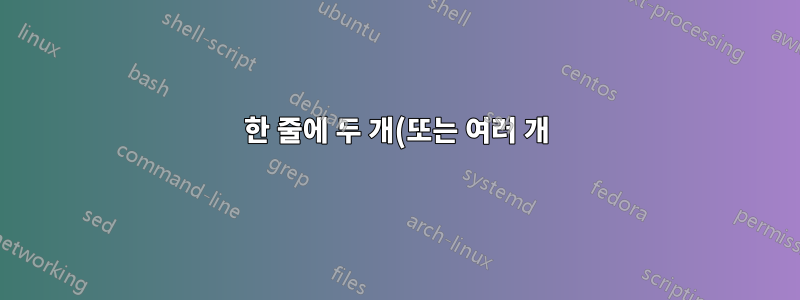%EC%9D%98%20QED%20%EA%B8%B0%ED%98%B8%EB%A5%BC%20%EB%84%A3%EB%8A%94%20%EB%B0%A9%EB%B2%95.png)
정리의 증명에 주장과 그 증명이 포함되어 있고, 주장의 증명이 정리의 증명을 완성한다고 가정합니다. 즉, 청구범위 증명이 끝난 후에는 정리 증명에 더 이상 텍스트가 필요하지 않습니다. 예를 들어:
\documentclass{article}
\usepackage{amsthm}
\newtheorem{theorem}{Theorem}
\newtheorem{claim}{Claim}
\begin{document}
\begin{theorem}
Today is Thursday.
\begin{proof}
We know that the day after Wednesday is always Thursday.
Thus the theorem follows from the following claim:
\begin{claim}
Yesterday was Wednesday.
\begin{proof}
My computer said so.
\end{proof}
\end{claim}
\end{proof}
\end{theorem}
\end{document}
기본적으로 두 번째 QED 기호는 해당 줄에 텍스트가 없더라도 첫 번째 QED 기호 아래 줄에 배치됩니다. 두 개의 (중첩된) 증명이 모두 그 지점에서 결론이 난다는 것을 나타내기 위해 두 QED 기호를 같은 줄에 나란히 배치하는 것이 더 자연스러워 보일 것입니다. 어떻게 이를 달성할 수 있나요? 명령 을 삽입해 보았지만 \qedhere도움이 되지 않는 것 같습니다.
답변1
.\qedsymbol
서문에서,
\let\oldqedbox\qedsymbol
\newcommand{\twoqedbox}{\oldqedbox\oldqedbox}
그런 다음 첫 번째 앞에 \end{proof}다음을 삽입합니다.
\renewcommand{\qedsymbol}{\twoqedbox}
두 번째 앞에 \end{proof}삽입하십시오.
\renewcommand{\qedsymbol}{}
"갱신"은 \qedsymbol지속되지 않습니다.
amsthm중첩된 증명을 처리하도록 설계되지 않았습니다. 그들은 매우 드뭅니다.
답변2
증명 환경을 위조할 수 있습니다.
\begin{theorem}
Today is Thursday.
\end{theorem} % moved to here
\begin{proof}
We know that the day after Wednesday is always Thursday.
Thus the theorem follows from the following claim:
\begin{claim}
Yesterday was Wednesday.
\end{claim}
\noindent\textit{\proofname.} My computer said so.\qedhere\qedsymbol
\end{proof}



